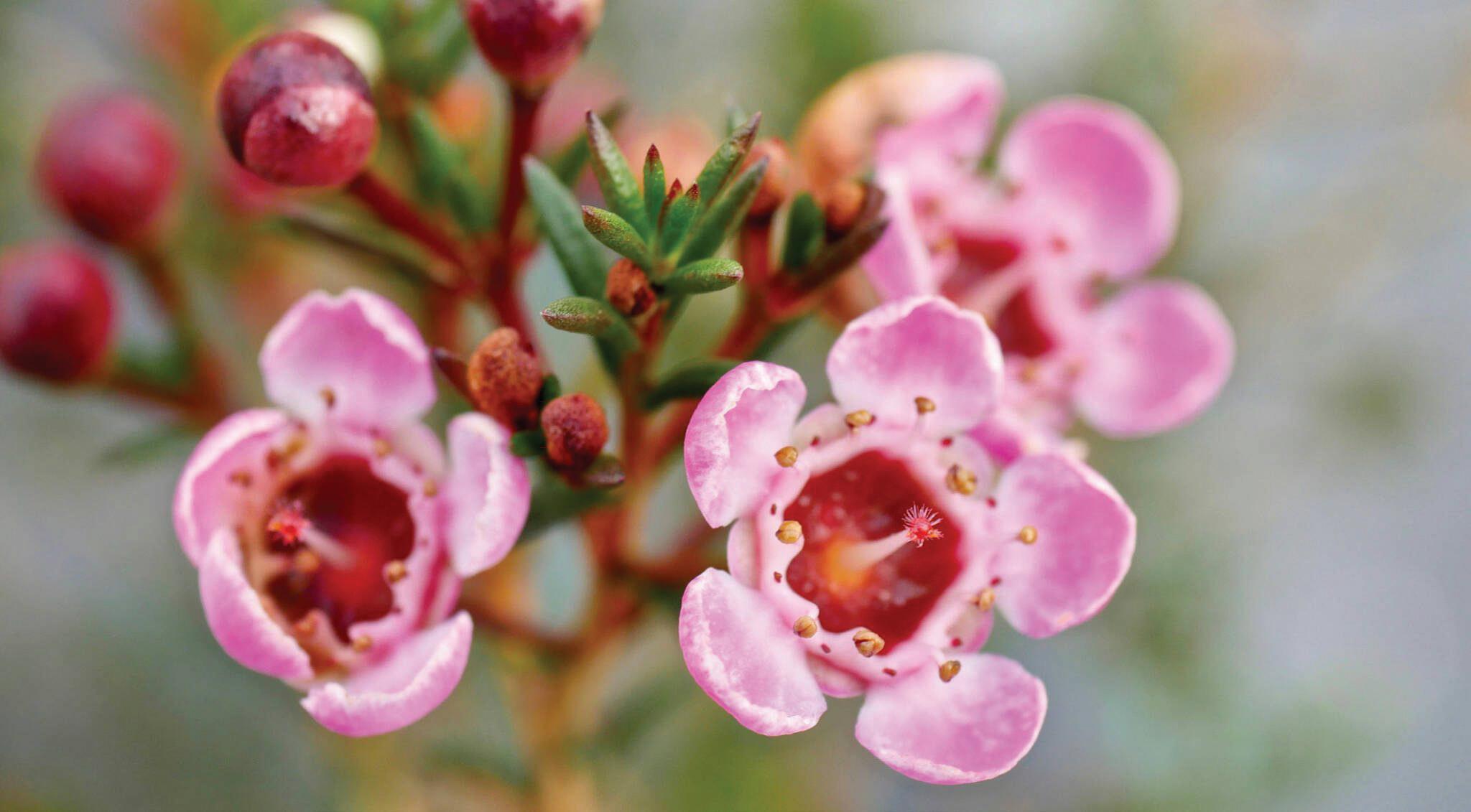
4 minute read
The Waxflower ‘Wow Che Bello’ Factor
By Ron van der Ploeg
In Italy, Pescia-based cooperative Flora Toscana does an excellent job coordinating the production and sales of Helix Australia’s potted waxflower, aka Chamelaucium uncinatum Success has many fathers, and the potted waxflower’s rise to prominence in global ornamental horticulture is no exception. Over the past two decades, many people on different continents have worked hard to help horticulturists worldwide grow more customer-centric pot waxflower varieties, unique in colour, flower size, shelf life, and timing.
The unmissable link between breeders and commercial partners
The key to success has been to link Australian specialist plant breeder Digby Growns – an authority in the field of Western Australia plant genera – from Kings Park and Botanic Garden (KPBG) in Perth with commercial partners Adrian Parsons from flower breeding company Helix Australia and Craig Musson, director of flower exporter Wafex. This partnership has been blooming since the early 2010s. Thanks to the triple helix approach with the Australian government, academia and the industry, it has led to a suite of fantastic waxflower hybrids, innovating waxflower together and sharing both costs and revenues.
Italo-Australian partnership
While the waxflower is well-known on the global horticultural scene as an outstanding filler flower, the potted waxflower, as a showstopping plant in pots and containers, is relatively new, at least on the old continent.
Thanks to an Italo–Australian collaboration, potted waxflower is finding its way to European markets. Currently, Italy hosts a sizeable production of potted waxflower, with an estimated production output of 250,000 units grown by an estimated 10–15 growers. With a growing market share in supply volumes, the potted waxflower 2.0 from Helix Australia is gaining momentum on the Italian peninsula and beyond.
Nearly 20 per cent of Italian-grown potted waxflower sells plants through the Pescia-based Flora Toscana cooperative, which emerged in 2004 following the merger of Tuscany’s floral wholesalers Toscoflora and Geoflor Toscana.
The new generation of potted waxflower
Luca Quilici from Flora Toscana, who is currently responsible for the business’ R&D and export, says, “The real breakthrough occurred when Helix Australia and Flora Toscana joined forces,” and that the new generation of potted waxflower from Helix
Australia provides a much-needed breath of fresh air. “In terms of Flora Toscana member growers, there’s a 100 per cent uptake of Helix’s improved waxflower varieties. The same goes for newcomers. We are actively seeking to increase production volumes. More recently, 6-0,000 potted ‘Snowflake’ dropped out of production in Portugal, so there is room for expansion. Next spring, for example, growers from Latina – south of Rome – will harvest their first potted waxflower.”


According to Quilici, the benefits of Helix’s PBR-protected cultivars vary. “They are truly amazing. All of them have a longer shelf life than existing varieties. Greater product durability helps to extend sales as large-flowered cultivars go hand in hand with larger flower buds. These can be harvested more prematurely. The colours are bright and come in unique tones and hues, putting on a great show for consumers.”
Passionate about the job
Quilici is delighted to work with Helix Australia, the company’s managing director, providing advice and support when needed. “We love working with Adrian Parsons, who is passionate about his job. We regularly catch up in Europe or Australia, and our greatest achievement so far is that we now have a strong team in place, including growers and salespeople, which will result in even greater things in the years to come.”
Production planning
In coordinating production, Flora Toscana’s crop technician regularly meets with growers. What does it take to succeed in a potted waxflower crop? Quilici responds, “The grower needs to keep an eye on production planning, particularly during the pruning season. If you prune plants too early, you will have a not-so-perfectly shaped plant. Conversely, your plants will not flower if you prune too late.”
The best innovations are never finished. What does Quilici think can help growers and traders to make potted waxflowers even more successful? “The pipeline of naturally compact waxflower hybrids coming through Helix Australia’s breeding programme is very exciting. This will reduce the cost of pruning and growth regulators and deliver a wider range of colours and bloom size far superior to the current ‘Snowflake’ variety, which dominates the potted waxflower market.”
Asked about the outlook for the new potted waxflower spring sales season, Quilici concludes, “We will continue to ramp up production in Italy and Spain. I believe potted waxflower has much-untapped potential, and we see a growing demand for the Helix varieties.”










